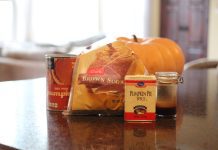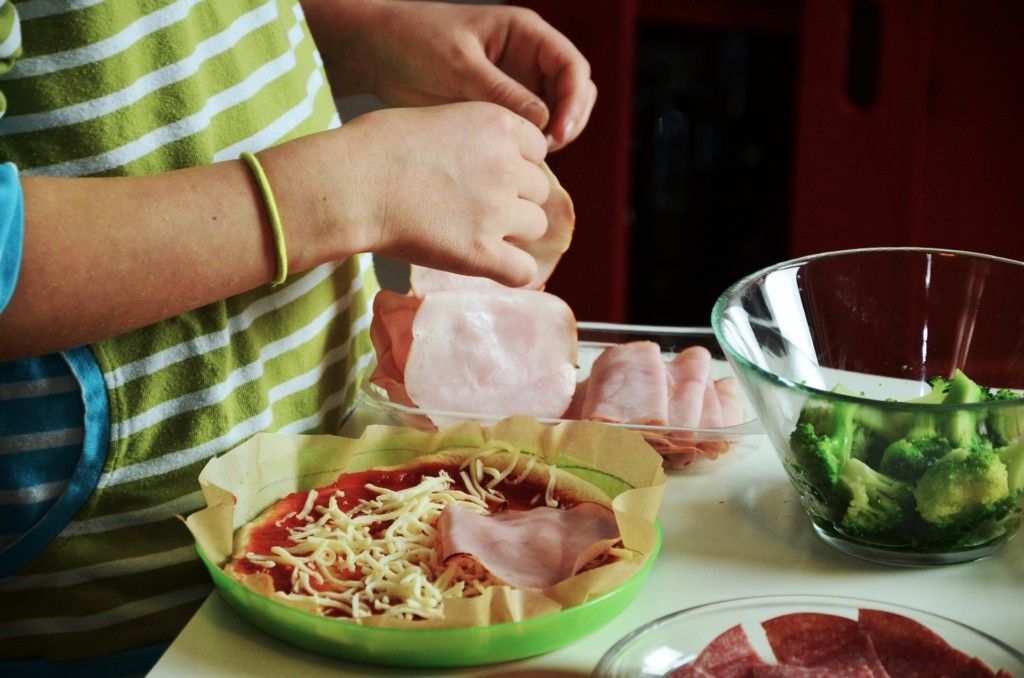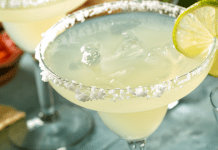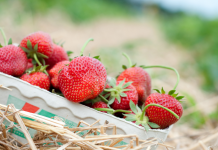There are SO many approaches to introducing baby food to your little ones that it can be a little overwhelming. Purees. Mesh Feeders. Baby Led Weaning. The options are endless, and sometimes it feels like if you choose the W. R. O. N. G. option your baby will hate solid food, be a a picky eater, be overweight, be underweight, and be allergic to everything under the sun—all at once.
For me, I didn’t necessarily have an approach I was determined to follow. I just knew one thing: I wanted to make his baby food myself.
I enjoy showing love to my family and friends through cooking, so why wouldn’t I prepare my son’s baby food myself? It has been so much fun to make his food and find interesting combos that you can’t buy at the grocery store. Avocado, sweet potato, mango. Butternut squash and pears. Chicken and apples. Plum and yogurt. Green beans and quinoa. The possibilities are endless!
Making homemade baby food doesn’t have to be hard!
Below are easy preparation methods for a variety of fresh vegetables, fruits, and meats for your baby. I listed these in the order that I introduced these foods to my son—and he has LOVED every single one of them. To make things easier for myself, I often cooked the vegetables and meat alongside our regular meals. I then prepped the baby food another day. Easy easy! At the end of the preparation methods are some seasoning, storage, and serving ideas that have worked for me.
Obviously I’m not a medical professional, so I can’t advise you on the specifics of when to introduce solid food to your baby or answer questions about allergies, nutrition, or the latest pediatric guidelines. That’s what your pediatrican is for! When I talked to ours about introducing solids, I learned that he was in the “anything (except honey) goes” camp. Once we gave our son a few types of food with no issues, we became pretty liberal with introducing multiple foods at once and started giving him a variety of textures and consistencies in his baby food.
If you’re stressed about any of the logistics, the best and most comprehensive source I’ve found on baby food is The Pediatrician’s Guide to Feeding Babies and Toddlers by Anthony Porto, MD and Dina DiMaggio, MD. I read and reviewed that book on my blog, and it is a GREAT for all parents of young children. I also have a lot of great resources and recipes on my Baby Food Pinterest board.
Without further ado . . .the recipes!
Sweet Potato
Preheat oven to 400 degrees F. Scrub a large sweet potato, then poke several times with a fork. Wrap in aluminum foil, then bake for 55-60 minutes until very soft. Allow to cool slightly, then cut open and scoop out flesh with a spoon.
Cool slightly, then pulse in a food processor or blender with 1/4 cup liquid (breastmilk, formula, water) until you reach desired consistency. Season to taste, and add additional liquid to thin if desired.
Butternut Squash
Preheat oven to 400 degrees F. Toss 2 cups cubed butternut squash with a little olive oil and pepper. Spread evenly on a sheet pan and roast for 25-30 minutes, or until tender.
Cool slightly, then pulse in a food processor or blender with 1/4 cup liquid (breastmilk, formula, water) until you reach desired consistency. Season to taste and add additional liquid to thin if desired.
Plum
First prepare 5-6 plums by blanching them so they are easier to peel. Then peel plums and remove the pit. Roughly chop the plums.
Pulse in a food processor or blender with 1/3 cup liquid (breastmilk, formula, water) until you reach desired consistency. Season to taste and add additional liquid to thin if desired.
Zucchini & Carrot
Idea from the Porto and DiMaggio book I referenced earlier. Preheat oven to 400 degrees F. Wash and peel 2 medium zucchini and 4 medium carrots. Slice zucchini in thin rings and carrots into bite size chunks. Toss with a little olive oil, then spread evenly on a baking sheet. Bake for 20 minutes, then remove from oven and flip veggies. Return to oven for another 10 minutes until soft.
Allow to cool slightly, then pulse in a food processor or blender with 1/3 cup liquid (breastmilk, formula, water) until you reach desired consistency. Season to taste and add additional liquid to thin if desired.
Note: you can also prepare and freeze the zucchini and carrots separately if you prefer.
Chicken
When making pureed chicken (let me just say that it takes a lot of love to puree meat, man!), I usually use chicken that has already been cooked for something else. But you can also poach chicken or bake it in the oven. Right now I’m choosing to stay away from rotisserie chicken for my son just because they are so salty.
After the chicken has been cooked, allow cool a little and then pulse in a pulse in a food processor or blender with liquid (breastmilk, formula, water) until you reach desired consistency. Use about 1/3 cup liquid for every large chicken breast. Season to taste and add additional liquid to thin if desired.
Note: you can also use this same method for turkey.
Spaghetti Squash
Preheat oven to 350 degrees F. Cut one large spaghetti squash in half lengthwise and scoop out the seeds, then place in a baking dish cut side down. Roast for 45-60 minutes until soft, then allow to cool for 10 minutes. Scrape inside of squash with a fork to remove spaghetti-like flesh.
Pulse in a food processor or blender with 1/2 cup liquid (breastmilk, formula, water) until you reach desired consistency. Season to taste and add additional liquid to thin if desired.
Pear
Peel and slice three very ripe pears.
Pulse in a food processor or blender with 1/4 cup liquid (breastmilk, formula, water) until you reach desired consistency. Season to taste and add additional liquid to thin if desired.
Note: this method also works for peaches and avocado.
Mango & Banana
Peel and cube a mango. Then, peel and slice one ripe banana. Pulse in a food processor or blender with 1/4 cup liquid (breastmilk, formula, water) until you reach desired consistency. Season to taste and add additional liquid to thin if desired.
Note: you can also prepare and freeze the mango and bananas separately if you prefer.
Seasoning
In my opinion, any seasoning goes for baby food—especially if you regularly cook with it at home. But here are some things my little guy likes:
- for vegetables: dried herbs like parsley, oregano, or dill, chili powder, cumin
- for fruit: cinnamon, ginger, nutmeg, pumpkin pie spice
- for chicken or turkey: garlic, onion, 21 Seasoning Salute from Trader Joe’s, or other salt-free seasoning blend
Storage
After making purees, I like to freeze them in ice cube trays. Most ice cubes hold about two tablespoons, which is a great introductory serving size for babies. The silicone trays work wonders (or so I’ve heard) but I just have cheap plastic ones that we used in our first apartment that didn’t have an ice maker. #memories
Then, I stash them in sandwich-size ziptop bags labeled with the contents and the date and place those bags in a larger gallon-sized freezer bag to help prevent freezer burn.
Serving
Baby food cubes defrost fairly quickly in a bowl on the counter or in the refrigerator. You can also microwave them for about 15-30 seconds per cube.
From about 6-8 months, I gave my son one or two cubes of purees once a day, usually at dinnertime. Sometimes I mixed the puree with a little bit of prepared baby oatmeal or natural unsweetened applesauce. He also enjoyed using the mesh feeder filled with cooked sweet potato, avocado slices, sliced oranges, sauteed apples, etc.
Around 8 months we added a lunchtime meal. In addition to the aforementioned mix-ins, I’ve also added plain yogurt, cooked quinoa, and mashed beans. He also eats off our plates much more often and enjoys things like soup (I just puree it a little bit if it’s a chunky soup), meatloaf, taco meat, sausage, cubes of bread/cornbread, etc.
This is just what has worked for us thus far. My son is only 9 months old, but I hope that making his food now will help him be a healthy, well-rounded eater in the future. Only time will tell!



















